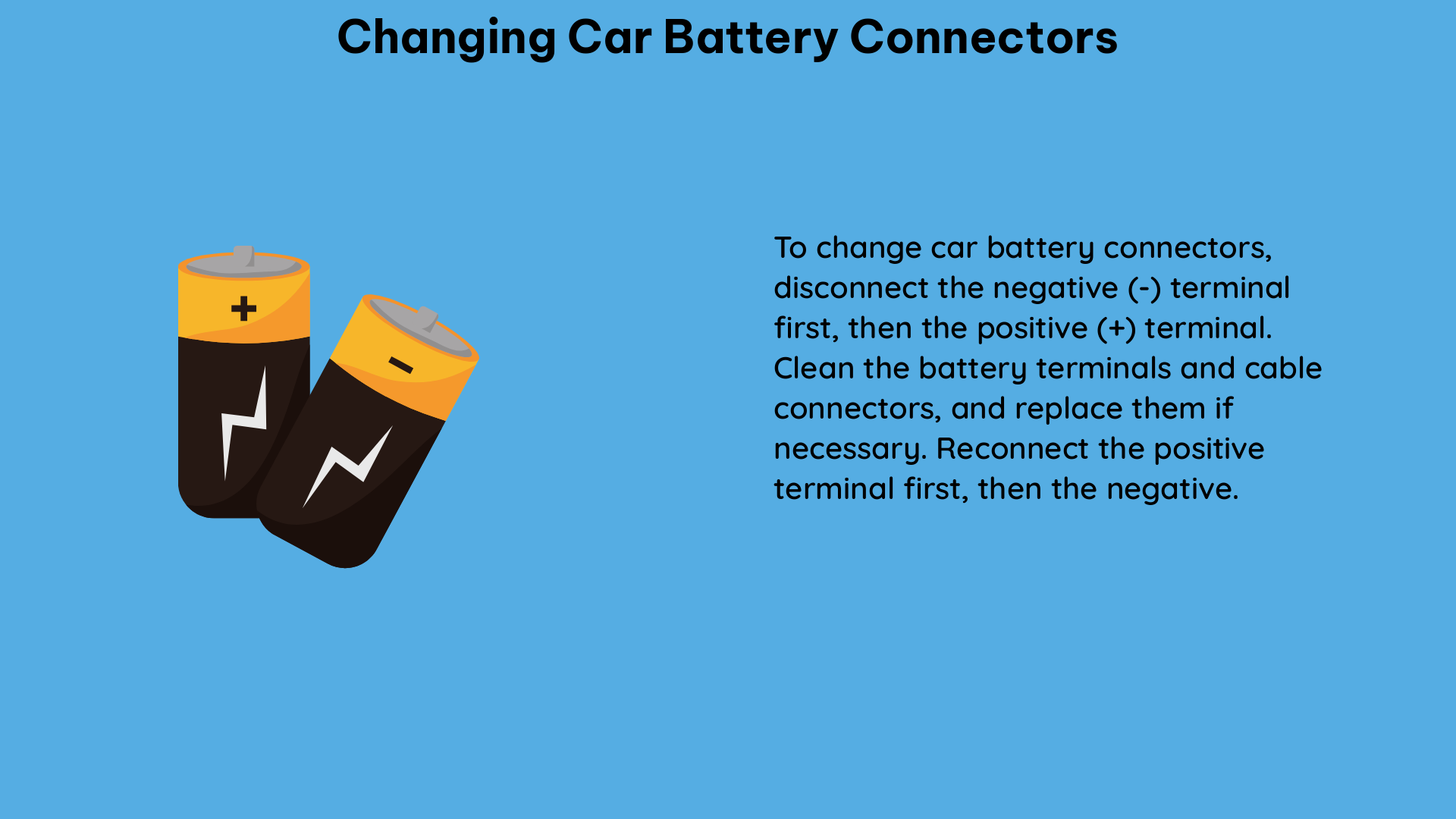Changing car battery connectors involves precise steps and attention to technical specifications to ensure a successful and safe replacement. The process involves identifying the battery type, removing the old connectors, cleaning the battery terminals, preparing the new connectors, and installing them in the correct order.
Identifying the Battery Type
The first step in changing car battery connectors is to identify the battery type, whether it’s a top post or side post battery. This information is crucial in determining the appropriate connectors needed for the replacement.
- Top Post Batteries: These batteries have the positive and negative terminals on the top of the battery. Older cars often use top post batteries, which may require cutting off the molded wires and using a clamp-style connector.
- Side Post Batteries: These batteries have the positive and negative terminals on the sides of the battery. Newer cars often use side post batteries, which may require eyelet-style connectors that need a specific clamp.
Removing the Old Connectors

When removing the old connectors, it’s essential to follow the proper safety procedures to avoid creating a short circuit.
- Disconnect the negative (black) cable first to prevent sparks or short circuits.
- Loosen the nut or bolt that secures the connector to the battery terminal.
- Gently remove the connector, taking care not to damage the battery terminal.
Cleaning the Battery Terminals
After removing the old connectors, it’s important to clean the battery terminals to ensure a good connection with the new connectors.
- Use a wire brush or a baking soda and water solution (1:1 ratio) to remove any corrosion or buildup on the battery terminals.
- Rinse the terminals with clean water and dry them thoroughly.
- Inspect the terminals for any damage or pitting, and replace the battery if necessary.
Preparing the New Connectors
Before installing the new connectors, it’s important to prepare them to ensure a secure and corrosion-free connection.
- Clean the male ends of the new connectors with a wire brush or sandpaper to remove any oxidation or debris.
- Ensure that the connector surfaces are shiny and corrosion-free.
- Check the connector type (clamp-style, eyelet-style, etc.) to ensure it matches the battery terminal.
Installing the New Connectors
When installing the new connectors, it’s crucial to follow the correct order and tightening specifications to prevent short circuits or loose connections.
- Install the positive (red) connector first, ensuring it is securely fastened to the positive battery terminal.
- Install the negative (black) connector, making sure it is not touching any metal components.
- Tighten the nuts or bolts on the connectors using a rubber-handled wrench, following the manufacturer’s specified torque.
Technical Specifications and Measurements
Here are some quantifiable data points and measurements specific to changing car battery connectors:
| Specification | Typical Value |
|---|---|
| Battery Voltage | 12.6V (when fully charged) |
| Wire Strip Length | 1/4 to 1/2 inch of insulation removed |
| Torque Specification | Manufacturer’s specified torque |
| Cleaning Solution | Baking soda and water (1:1 ratio) |
| Connector Types | Top post, side post, clamp-style, eyelet-style |
Remember, it’s essential to refer to the manufacturer’s instructions and specifications for your specific vehicle to ensure a successful and safe replacement of the car battery connectors.
Conclusion
Changing car battery connectors requires attention to technical details, including battery type, connector type, voltage, wire strip length, and torque specifications. By following the correct procedures and using the right tools, you can ensure a successful and safe replacement of your car’s battery connectors.
Reference:
– How to Change a Car Battery
– Keeping Settings While Replacing Battery
– Car Battery Connector Replacement

The lambdageeks.com Core SME Team is a group of experienced subject matter experts from diverse scientific and technical fields including Physics, Chemistry, Technology,Electronics & Electrical Engineering, Automotive, Mechanical Engineering. Our team collaborates to create high-quality, well-researched articles on a wide range of science and technology topics for the lambdageeks.com website.
All Our Senior SME are having more than 7 Years of experience in the respective fields . They are either Working Industry Professionals or assocaited With different Universities. Refer Our Authors Page to get to know About our Core SMEs.